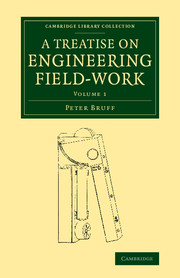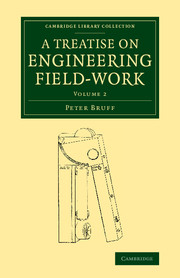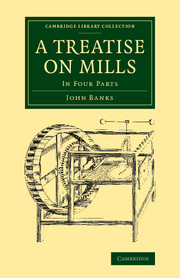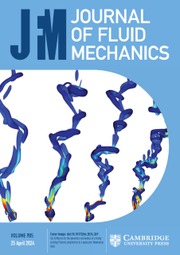A Treatise on Engineering Field-Work
In the 1840s, the civil engineer Peter Bruff (1812–1900) designed what was then the largest brick structure in Britain, the 1,000-foot-long Chappel Viaduct in Essex. He went on to become a railway entrepreneur and developer, and was responsible for the creation of the resort town Clacton-on-Sea, where he also designed many of the buildings. In this illustrated guide, first published in 1838 and here reissued in the revised and expanded two-volume second edition of 1840–2, he discusses the theory and practice of surveying (calculating the accurate position of points in the landscape) and levelling (calculating the accurate height of points). Volume 1 covers surveying; Bruff discusses different methods for calculating bearings and distances, and the equipment required. He explains the various errors to which each method is prone, how to avoid or minimise them, and gives example surveys of land boundaries, parishes and railway lines.
Product details
No date availablePaperback
9781108071536
198 pages
216 × 140 × 12 mm
0.26kg
37 b/w illus.
Table of Contents
- 1. Explication of the term 'surveying'
- 2. On surveying with the chain
- 3. General directions for conducting a survey
- 4. Examples in surveying
- 5. Surveying with angular instruments
- 6. On protracting angles.







